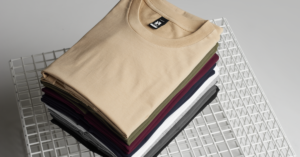The 21st century has seen unprecedented focus on the issue of gender. What was traditionally thought of as being binary (either male or female) has now become open to a wide range of different interpretations, as the LGBTQ+ community is making their voices heard and society is becoming increasingly tolerant and inclusive of various perspectives.
Uniforms and Gender
Of course, those individuals who do not wish to identify as male or female should have their viewpoints respected in all facets of their lives, from the personal to the professional. This means the debate has infiltrated the schoolyard and the workplace, with uniforms coming under particular scrutiny about the part they play in assigning gender roles to children and adults in an academic or professional setting, either on purpose or unintentionally.
 Gender-specific school uniforms
Gender-specific school uniforms
In years gone by, there has been a very strict division between the dress code expected of young boys and girls when attending school. Girls have often been expected to wear blouses, skirts and tights, while boys have been generally restricted to shirts, blazers and trousers. Inherited from generation upon generation of schoolchildren in the past, these traditions have sent out very clear signals to the children that they are expected to look – and by extension, behave – in a way appropriate to the gender they took on at birth.
However, greater understanding of the issues that many people face with regards to their own sense of individuality and what that means for the gender they identify with has led to suggestions that these kinds of customs are outdated and inhibitory, placing unreasonable demands on children. A 2016 study by the Guardian found that there were 2,700 children being treated for gender dysphoria in the UK. This is a term which refers to a disconnect between the gender with which a person was born and the one with which they most identify, leading to feelings of confusion, discomfort and stress.
In an attempt to allay those unwanted emotions and help all children feel comfortable in their own skin inside the classroom, some schools have taken proactive steps to phase out the idea of gender-specific uniforms. Earlier this year, one school in Bradford banned skirts altogether, claiming that by requiring everyone to wear trousers, they were simplifying and solving the problem. However, students at the school disagreed with the ruling and petitioned to have it revoked.
Meanwhile, the Welsh government has taken a different approach to the issue, outlawing gender-specific uniforms but not banning any particular item of clothing. Instead, trousers are not allowed to be marketed as “boy’s” clothing or skirts as “girl’s” attire. Everyone is simply free to wear whatever they wish.
Gender-specific work uniforms

It’s only logical that the same concerns are found among the world of adults as they are among children. In fact, that same Guardian study found there were 12,700 gender identity patients over the age of 18, meaning that questioning of the gender roles which society dictates becomes more commonplace as people grow up and come to terms with their own sense of identity. This obviously holds implications for the uniform they wear in their professional lives.
The issue here becomes slightly more difficult to regulate, since every workplace is responsible for setting its own rules on whether or not its employees are required to wear a uniform in the first place – and if so, what shape that uniform takes. Workwear is instrumental in clothing staff in apparel that exudes an image of professionalism and competency, but it should not inhibit anyone’s sense of self or make them feel uncomfortable while wearing it. Aside from the obvious detrimental impact this can have on productivity and employee morale, it’s also just a basic human right for everyone to feel safe, relaxed and unthreatened in the workplace.
Therefore, it’s advisable for bosses and executives to implement a uniform policy which takes into account the differing opinions which may be present among their workforce. If possible, holding a team meeting or even just sending out an email questionnaire on the subject could be conducive to understanding the thoughts of the team and listening to their arguments, thus reaching a conclusion which satisfies all.
Uniforms from Garment Printing
At Garment Printing, we fully believe in the importance of kitting out pupils and employees in workwear that not only looks great, but allows them to perform their duties to the best of their ability. That’s why we offer a wide range of school uniforms and professional workwear that caters for all styles and tastes, meaning there’s guaranteed to be an option on offer that will suit your unique circumstances. Why not browse our catalogue today? Your new school or workplace wardrobe is just a few clicks away.




